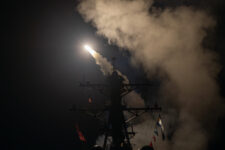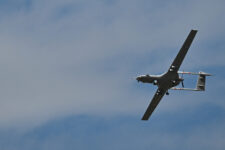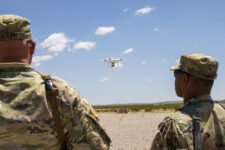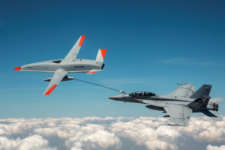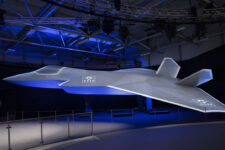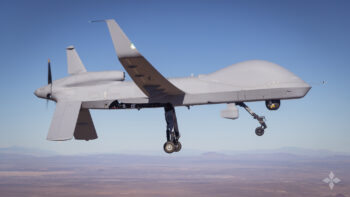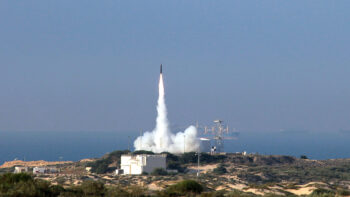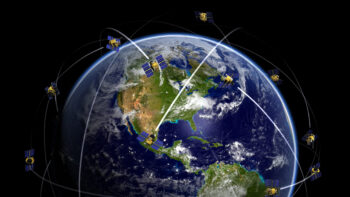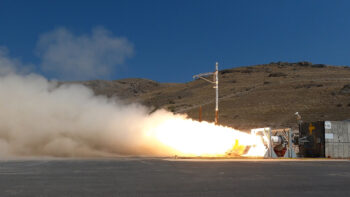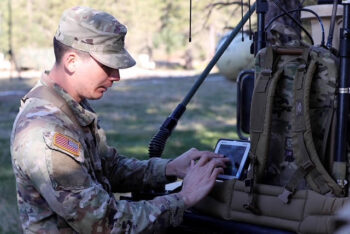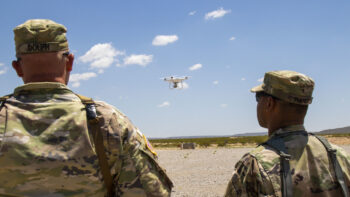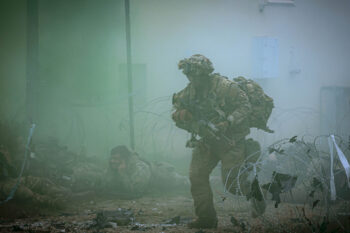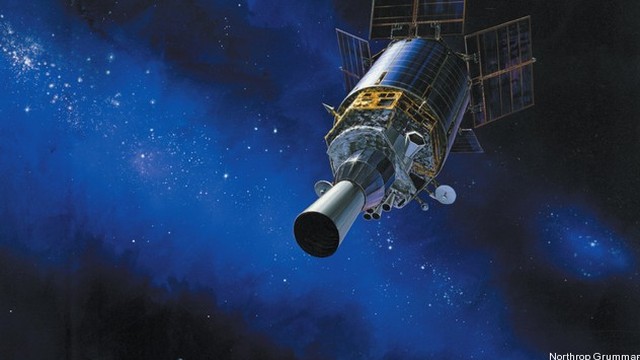
Defense Support Program early warning satellite
ARLINGTON, VA: The likely demise of the US-Russia New START treaty could lead to a dangerous uptick in jamming, lazing and possibly even kinetic attacks of US satellites designed to monitor Russia nuclear weapons and forces, says a new study by the respected Aerospace Corp.
Noting that prospects for extension of the New START treaty by the Trump Administration are “dim,” the study says: “This change will stress the national security space community’s capabilities, assumptions, and habits, and is likely to raise new risks for the stability of the space domain.”
The study, “Noninterference With National Technical Means: The Status Quo Will Not Survive,” lays out four possible scenarios regarding the fate of “national technical means, NTM” operated by the Air Force and the National Reconnaissance Office if New START collapses.
All of the scenarios predict “opportunity costs” as intelligence, surveillance and reconnaissance (ISR) satellites are swamped with new and more difficult tasking to keep tabs on Russian nuclear forces to compensate for the disappearance of onsite inspections and information exchanges required under the current treaty. Authors Michael Gleason and Luc Riesbeck say that increased demand will come on top of ever-growing competing requirements for monitoring China, North Korea, Iran, and terrorist organizations.
NTM is the arms control term of art for methods of verifying treaty compliance. Although no treaty specifies NTM systems, in practice they encompass all US intelligence and national security satellites (as well as aircraft, drones and fixed radar). “It’s not just IC satellites,” said Gleason during a rollout of the study today.
For the past 50 years, as the Aerospace study points out, nuclear arms control agreements — including New START, signed in 2010 and currently the only remaining US-Russia treaty capping nuclear weapons arsenals — have included prohibitions against any interference with NTM.
The study warns, the collapse of New START could undermine “NTM overflight’s legitimacy in international law,” especially since the US position from the 1960s—that overflight by military and intelligence satellites is a “peaceful use” of outer space—already is becoming “difficult to reconcile while avowedly preparing for warfighting in, through, and from space.”

Rose Gottemoeller
New START limits Russia and the US each to no more than 1,550 deployed strategic warheads and 700 deployed strategic delivery vehicles (meaning ICBMs, submarines and bombers). As Breaking D readers know, the Trump Administration has been waffling on whether it will pursue a five-year treaty extension when the treaty expires in February 2021. Instead, President Donald Trump has ordered his staff to begin work on a possible new trilateral nuclear arms control treaty that would include China and cover sub-strategic weapons (of which the Russians have more than the US) that are not covered by New START. Such a multilateral treaty is widely considered pie-in-the-sky by nuclear arms control experts.
Rose Gottemoeller, who was instrumental in negotiating New START and recently retired as deputy ambassador to NATO, stressed that the expiration of New START “is not inevitable,” and argued that it was in the US national interest to maintain it. On the other hand, she agreed that the norm against interference with NTM has been eroding for some time.
“The norm is worth preserving and extending,” she said, although “it may need some updating and strengthening.” In particular, she said, nations need to consider how to better protect drones used for verification of various international agreements.
She also questioned China’s current commitment to the norm and Beijing’s willingness to simply follow US and Russian precedent. She urged Washington and Moscow to work together to convince China that not interfering with NTM is in Beijing’s interest too.

Aerospace Corp. study of post-New START scenarios for NTM interference
The four scenarios, which the study stresses represent only a continuum of possibilities, are:
Scenario 1 “Noncodified, bilateral mutual restraint:” The United States and Russia decide separately that it is in their national interest to continue current practices regarding noninterference with NTM, even in the absence of a bilateral agreement.” However, the study says, the lack of a legal agreement on NTM probably will undercut international adherence to what up to now has been a generally agreed norm — in particular emboldening China and India to test interference methods. It could also lower the “threshold for initiating the first-use of offensive space control capabilities, resulting in less crisis stability.” Further, efforts to develop multilateral norms of behavior and transparency and confidence-building measures in space — efforts the Trump Administration has pledged to support — would be undermined.
Scenario 2 “Codified, bilateral mutual restraint:” The two sides sign a new detailed agreement on noninterference with NTM. While more optimistic than Scenario 1, the collection requirements for tracking Russia’s nuclear forces would still grow, the study says. However, the stability of the space domain would be unaffected in Scenario B, and the challenges arising from the increasing contested nature of the space domain would not be exacerbated.
Scenario 3 “Multilateral restraint:” A multilateral treaty, including China or maybe the P5 nuclear weapons states (that’s China, France, Russian, the United Kingdom, and the US), is signed to prevent NTM interference. The most optimistic of the scenarios, it would strengthen the norm legitimizing ISR satellite overflights. As is often the case in arms control, the most optimistic scenario is also the least likely, given the current difficulties facing multilateral fora such as the United Nations in reaching such any new space agreements.
Scenario 4 “No mutual restraint:” This is the most pessimistic case. “Tracking Russia’s nuclear forces becomes increasingly difficult. The stability of the space domain deteriorates severely due to the absence of mutual restraint and the degradation of existing processes for developing international norms of behavior for space. The danger of miscommunication, misperception, and miscalculation swells along with the risk of conflict quickly extending into space. Current threats to stability in the space domain are greatly exacerbated, resulting in its full destabilization.”
What can the US do to counter those negative consequences should New START topple?
- Negotiate a stand-alone NTM noninterference agreement;
- Reveal the identity of NTM satellites to allow such an agreement to be acceptable, and to increase deterrence; and,
- Publicly attribute interference with U.S. satellites to bolster deterrence and to ensure other countries understand what constitutes responsible or irresponsible behavior in space.
Amid its own war, Israel sending Arrow 3 air defenses to Germany in 2025
“When we saw what was happening with Ukraine … we passed on a clear message that we remain committed to German national security …,” former Israeli ambassador to Germany Jeremy Issacharoff told Breaking Defense.


